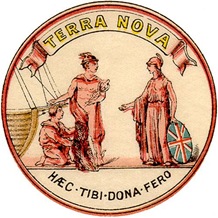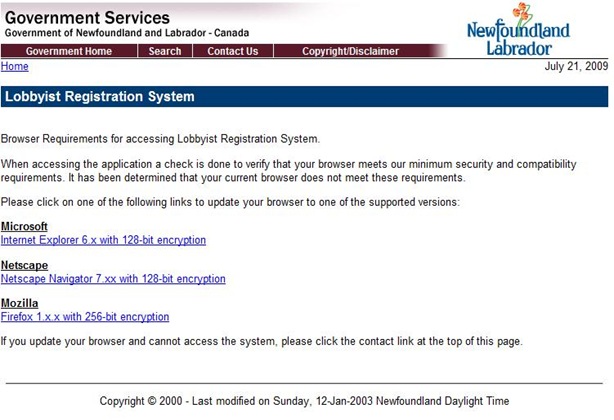From the
2008 annual report of the Ireland Newfoundland Partnership:
Irish Legacy Project at The Rooms
The Irish Department of Foreign Affairs, the Newfoundland and Labrador Department of Tourism, Culture and Recreation, INP and IBP are supporting the establishment of the Irish Legacy Project at The Rooms Provincial Museum, Art Gallery and Archives (www.therooms.ca).
The Irish Legacy Project will be a focal point for telling both the historical and contemporary stories of the Irish in Newfoundland. It comprises the development of a permanent exhibit for the museum, and the creation of an ancestral research workspace for the archives. It is expected that the museum exhibit will open to the public in September 2009.
There’s also a pretty good description of the project in the
INP strategic plan for 2008-2010:
In 2007, INP became a partner in a major initiative titled the Irish Legacy
Project, which will establish a permanent exhibit at The Rooms Provincial Museum, Art Gallery and Archives in St. John’s. The exhibit will incorporate film, artefacts, maps, and text to describe the historical and present day relationship between Ireland and Newfoundland. It is envisaged that the establishment of this legacy project at The Rooms, will provide a focal point
for future culture and heritage projects and will assist the long-term sustainability of the Ireland Newfoundland connection. The core of the Irish Legacy Project will be a permanent exhibit in the provincial museum. To complement this exhibit, INP should continue to encourage art exchanges between the provincial art gallery and the Irish Museum of Modern Art, building upon a previous exchange in 2005.
You also won’t find anything over at the provincial version of the Ireland partnership. There’s been
no annual report from the Ireland Business Partnership since 2006-07 likely because the local website hasn’t been updated for the most part since late 2008. Even the
“What’s New” section doesn’t mention the permanent exhibit, even though that page was updated in June 2009.
So what about The Rooms?
Funny thing is, you won’t find any reference to this exhibit on The Rooms’ website, even though the project has been underway since 2007 - at least - and is apparently slated to open in September 2009.
This is really strange since in the museum world a permanent exhibit is a pretty big deal. It’s basically the
core of what the museum is supposed to represent.
You can see that by looking at two of the three
permanent museum exhibits at The Rooms right now. One is on the province’s natural history. A second one focuses on aboriginal people in the province. That pretty much follows on from the old Newfoundland Museum which combined a natural history museum and a human history museum in one pile.
A permanent exhibit that focused on one of the groups of European settler populations wouldn’t necessarily be the logical next step. Given the limited permanent space in the building, one might expect the next permanent exhibit to have a broader look at European history in the province with sections devoted to various aspects of that history. The Irish would be there, along with the English – as the largest group – and the Norse, French, Basques and others.
An approach that emphasises diversity and the complexity of our history would also be in keeping with the provincial government’s own stated image of the province:
My Government will affirm Newfoundland and Labrador’s status as a distinct people, not uniform in lineage but multi-cultural, one nation inclusive of many nations living in harmony together.
Focusing in one one specific ethnic group - even one with as significant a role in Newfoundland and Labrador history as the Irish - would be a pretty powerful political statement for one thing.
Such a narrow exhibit would also run the risk of providing a potentially distorted view of the history of Europeans in Newfoundland and Labrador complete with the stamp of museum authority. That’s no small issue given the absence of a required history course in the provincial high school curriculum, for example, and what appears to be a popular tendency to imagine or fantasize our history.
Then there’s that ancestral archives thing. The provincial archives already get a huge chunk of business from people doing research into their own family tree. Putting in some sort of dedicated genealogy workspace is a significant undertaking. If the new workspace had an ethnic overlay to it, like say a special emphasis on the Irish alone, we’d be looking at a major alteration of the archives’ philosophy.
So with such a big thing in the works, it’s a bit peculiar that there has been so little public mention of it by the people behind the “legacy” project.
Let’s look a little deeper.
There
is a reference to the project in
The Rooms strategic plan (undated, but covering the period 2008-2011) tabled in the legislature in 2008. It refers to completion of an undefined “Irish Legacy Project” by 2011, as one example of how the museum division will “have increased opportunities for the public to interact in a meaningful way with the history and visual arts of the province.” Planning would be done by 2009. The strategic plan doesn’t saying anything about this being a permanent exhibit.
There’s also a reference to the project in The Rooms
2007-08 annual report (tabled in February 2009 (!)):
…working with the Irish Business Partnerships and the Irish Newfoundland Partnership, and the Irish Department of Foreign Affairs, the Museum initiated the Irish Legacy Project. The project, scheduled to open in March, 2009, will result in an exhibition focusing on the historical and contemporary connections between Newfoundland and Ireland.
Again, there’s no definition of the project nor a reference to a permanent exhibit but we do have a new date: March 2009. Now that’s not a date for planning to finish, that’s a date for the thing to open even though a different timeline was given in the strategic plan.
Let’s go back to digging and see if there’s more somewhere else.
Forget the provincial government website. There’s nothing there on it at all in the way of a news release or ministerial statement.
Over at the Roman Catholic Archdiocese of St. John’s website you’ll find this bit:
The Archives of the R.C. Archdiocese will have a number of archival documents on exhibit in Talamh an Éisc – The Fishing Ground , an exhibition that introduces the Irish peoples who have been in Newfoundland and Labrador since the late 1600s, the exhibit explores the communities they built and celebrates the contributions they made to life here in Newfoundland and Labrador. The permanent exhibit will open in The Rooms on March 18, 2009. [Bold in original]
They even have a specific date, but no exhibit opened in March 2009, though.
But there’s that word “permanent” again.
This is all very peculiar. Neither The Rooms’ strategic plan nor annual report are documents people are going to leaf through impatiently trying to find out what is coming up. Even if you did, the language is so vague as to be impenetrable.
Sure, the documents are publicly available but if no one from The Rooms or the provincial government highlighted the project, mentioning it in the annual report or strategic plan is as good as saying nothing about it at all.
And if the crowd at The Rooms were hopped up on this major project, you’d think they’d be mentioning it, letting us now how important it is, how much work it will involve, and generally trying to build up a bit of attention for it. After all, a new permanent exhibit on the Irish in Newfoundland is no small venture.
And since both the archdiocese and the Irish government think this is going to be a permanent feature of The Rooms, it seems very strange there’s been not so much as the peep of a pipe or the lilt of a lyre about it.
This is all very interesting and very peculiar.
And it makes you wonder what is really going on over in the box the Basilica came in.
-srbp-








